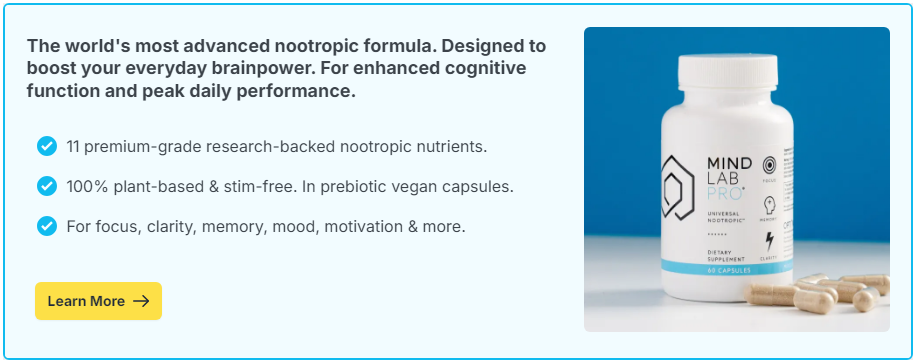
Yes, regular reading can expand brain connectivity by strengthening neural networks involved in language, memory, and imagination. Neuroscience studies show that consistent reading increases connectivity between brain regions and even produces lasting changes in how the brain processes information.
Contents
- How Reading Shapes the Brain
- Scientific Evidence
- Benefits of Expanded Connectivity
- Reading vs. Other Cognitive Activities
- Types of Reading and Brain Effects
- How Much Reading Is Enough?
- Limitations of the Research
- Practical Ways to Expand Brain Connectivity Through Reading
- Evidence-Based Complements
- The Bottom Line
How Reading Shapes the Brain
Reading is not a natural skill – we learn it through deliberate practice, and the brain adapts to support it. This process recruits multiple regions:
- Visual cortex: Recognizes letters and patterns.
- Language networks: Processes meaning and syntax.
- Default mode network: Supports imagination, empathy, and perspective-taking.
- Memory systems: Store and recall narratives, facts, and associations.
The interaction of these networks strengthens connectivity, essentially wiring the brain for complex thought.
Scientific Evidence
- A 2013 study in *Brain Connectivity* showed that reading a novel increased connectivity in the left temporal cortex (language) and central sulcus (sensory-motor integration). These changes persisted for days after reading.
- Long-term reading habits have been linked to thicker cortical areas in the brain, particularly in regions supporting comprehension and higher-order thinking.
- Children who read regularly show stronger white matter connectivity in pathways essential for language development and executive function.
Benefits of Expanded Connectivity
- Improved comprehension: Stronger connections enhance the brain’s ability to integrate complex ideas.
- Enhanced empathy: Reading fiction activates brain regions involved in theory of mind – understanding others’ perspectives.
- Greater creativity: By connecting disparate networks, reading fuels imagination and innovative thinking.
- Resilience against decline: Lifelong readers often show cognitive reserve, protecting against age-related decline.
Reading vs. Other Cognitive Activities
Unlike passive entertainment, reading requires active engagement. While watching films stimulates visual and emotional centers, reading forces the brain to simulate scenes internally, exercising imagination and memory. Compared to puzzles or games, reading engages more distributed networks, making it uniquely effective at strengthening long-range connectivity.
Types of Reading and Brain Effects
- Fiction: Strongly enhances empathy and social cognition by immersing readers in others’ perspectives.
- Non-fiction: Builds knowledge networks, reinforcing memory and analytical reasoning.
- Poetry: Activates rhythm and auditory processing, stimulating creativity and associative thinking.
- Digital vs. print: Both can expand connectivity, though print reading may encourage deeper focus and longer attention spans.
How Much Reading Is Enough?
Even 15–30 minutes of daily reading can have measurable effects on the brain. What matters most is consistency and engagement. Deep, immersive reading – where the reader becomes absorbed in the text – appears to produce the strongest connectivity changes.
Limitations of the Research
- Most studies are correlational – it’s hard to separate whether reading builds connectivity or if naturally stronger networks encourage reading.
- Effects vary depending on reading material and individual differences.
- Connectivity changes are strongest with sustained habits, not occasional reading.
Practical Ways to Expand Brain Connectivity Through Reading
- Read diverse genres: Fiction for empathy, non-fiction for reasoning, and poetry for creativity.
- Engage deeply: Eliminate distractions to encourage immersive reading.
- Discuss what you read: Conversation reinforces connections and expands understanding.
- Alternate print and digital: Use both formats to integrate focus and flexibility.
Evidence-Based Complements
- Learning new skills: Reinforces connectivity by challenging multiple brain regions.
- Physical exercise: Increases blood flow and neurogenesis, supporting new neural pathways.
- Language learning: Engages networks similar to reading and enhances cross-brain communication.
- Meditation: Improves focus and self-awareness, reinforcing networks involved in reading comprehension.
The Bottom Line
Regular reading expands brain connectivity by strengthening neural pathways across language, imagination, and memory networks. Over time, this leads to improved comprehension, creativity, and resilience against decline. More than a leisure activity, reading is a form of brain training that wires the mind for adaptability and complex thought.

